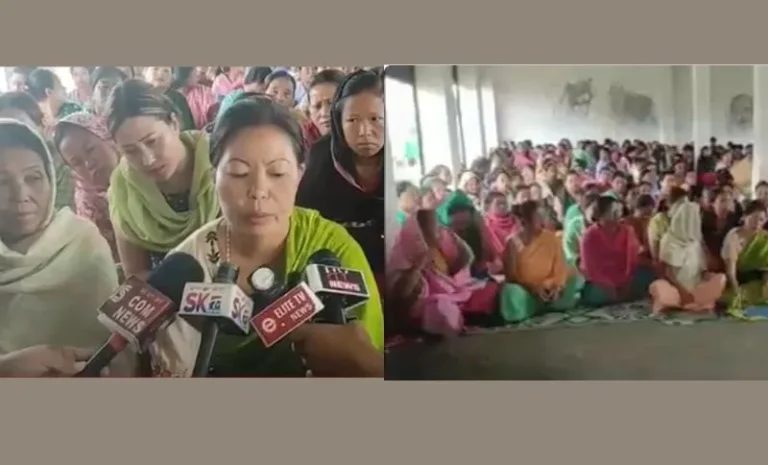Assam CM Warns Of Manipur Spill-Over, Deploys Additional Forces In Barak Valley
Summary of the News Article
In a concerning development, Assam Chief Minister Himanta Biswa Sarma has intensified security measures in the Barak Valley due to fears of conflict spillover from Manipur. Amid ongoing unrest in Manipur, characterized by ethnic clashes and violence, the Chief Minister has deployed additional forces to maintain peace in this sensitive region. This step highlights the interconnected nature of the northeastern states and the need for robust measures to prevent unrest from spreading.
Long Article
The Background: Why is the Barak Valley in Focus?
The northeastern states of India share unique socio-political dynamics, often leading to intertwined challenges. The Barak Valley, located in southern Assam, is a melting pot of diverse ethnic communities such as Bengalis, Meiteis, Kukis, and Dimasas. Known for its relative peace amidst the turbulence of neighboring states, it now faces potential threats from the escalating crisis in Manipur.
The Manipur conflict, deeply rooted in ethnic and territorial disputes, has reignited over the last few months. The clashes between Meiteis and Kukis have resulted in significant unrest, with widespread violence affecting daily life. This turmoil has created ripple effects in neighboring areas like the Barak Valley, necessitating precautionary actions by Assam’s government.
Steps Taken by Assam’s Government
- Increased Security Deployment
Understanding the gravity of the situation, Chief Minister Himanta Biswa Sarma has directed the deployment of additional security personnel to the Barak Valley. These measures aim to ensure that peace is maintained and any spillover violence from Manipur is contained. - Monitoring Ethnic Tensions
Authorities have been tasked with keeping a close watch on communal interactions within the Barak Valley, especially given the mixed ethnic composition of the region. Proactive measures include identifying potential flashpoints and defusing tensions before they escalate. - Coordination with Central Forces
To strengthen the security apparatus, the state government is coordinating closely with central security forces. This collaboration ensures a streamlined approach to addressing emerging challenges.
The Spillover Threat from Manipur
Manipur’s crisis stems from deep-seated issues, including demands for tribal autonomy and land rights. The recent ethnic clashes have led to a breakdown of law and order, with incidents such as arson, killings, and blockades becoming alarmingly frequent. The spillover threat arises due to the proximity of the Barak Valley to conflict zones in Manipur and the shared ethnic ties among communities.
Events such as the transportation of bodies of victims to Silchar for autopsies have already sparked tensions. Protests and retaliatory actions from ethnic groups further amplify the potential for unrest in Assam’s Barak Valley
What’s at Stake for the Barak Valley?
The Barak Valley serves as a vital economic and cultural hub, linking Assam to other northeastern states like Tripura, Mizoram, and Manipur. Any disturbance in this region can have cascading effects, disrupting trade routes, social harmony, and political stability.
The valley’s peaceful coexistence among its communities is now under strain due to the fears of violence spilling over. Historical examples, such as the restraint shown during national communal tensions, offer hope but also underscore the importance of proactive measures
.
The Role of Community Leaders and Civil Society
Maintaining peace requires more than just government intervention. Community leaders, civil society organizations, and local influencers have a critical role in fostering dialogue and understanding among different ethnic groups. Collaborative initiatives to promote cultural exchange and shared identity can help mitigate potential conflicts.
The Bigger Picture: Learning from the Northeast’s Challenges
The situation in the Barak Valley offers a microcosm of the broader challenges faced by India’s northeastern states. Issues such as ethnic diversity, territorial disputes, and socio-economic disparities require long-term solutions that go beyond immediate crisis management. Initiatives such as infrastructure development, educational outreach, and employment generation can address the root causes of unrest, fostering a more inclusive and harmonious society.
FAQs
- Why is the Barak Valley significant in this context?
The Barak Valley is a peaceful region that serves as a cultural and economic link between Assam and neighboring northeastern states. Its stability is crucial for regional harmony. - What triggered the current tensions in Manipur?
The Manipur crisis stems from long-standing ethnic disputes and territorial claims, exacerbated by recent violence between the Meitei and Kuki communities. - How is Assam’s government addressing the spillover threat?
Assam has deployed additional forces, enhanced surveillance, and coordinated with central agencies to prevent violence from spreading into the Barak Valley. - What role do community leaders play in maintaining peace?
Community leaders are vital in fostering dialogue and cultural understanding, helping to ease ethnic tensions and prevent conflicts. - What lessons can be learned from this situation?
Addressing root causes like socio-economic disparities and promoting inclusive development are essential for lasting peace in the northeastern states.



